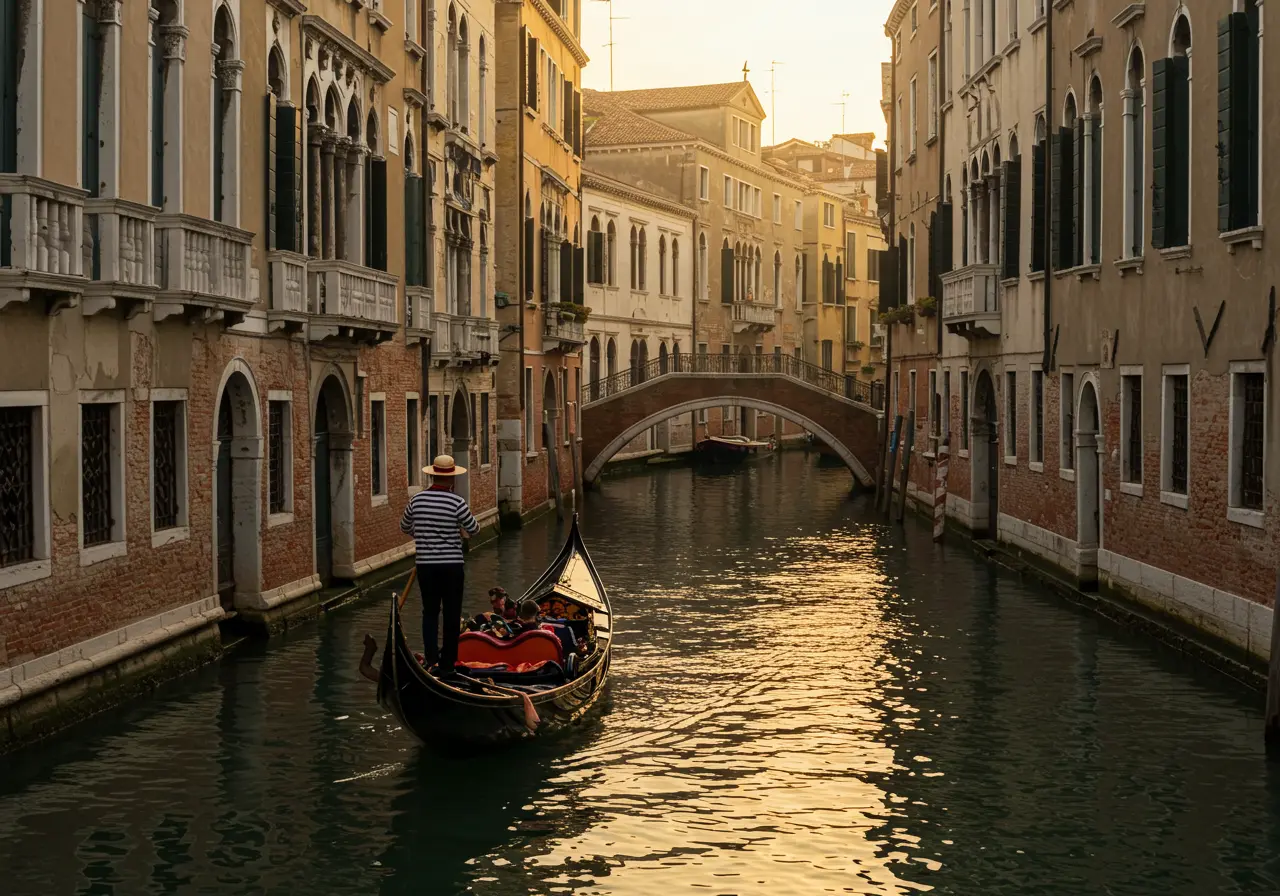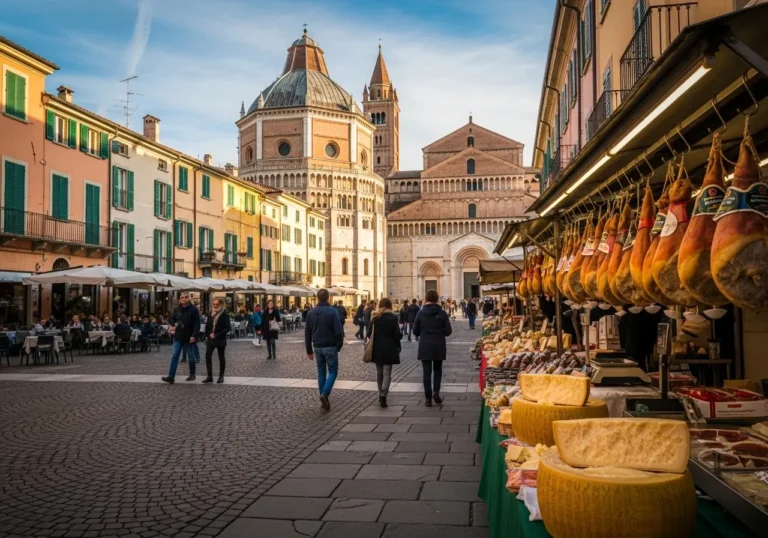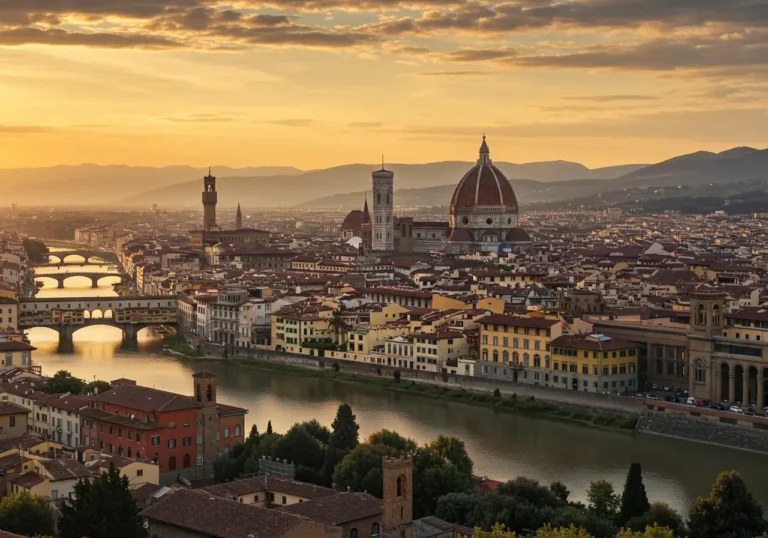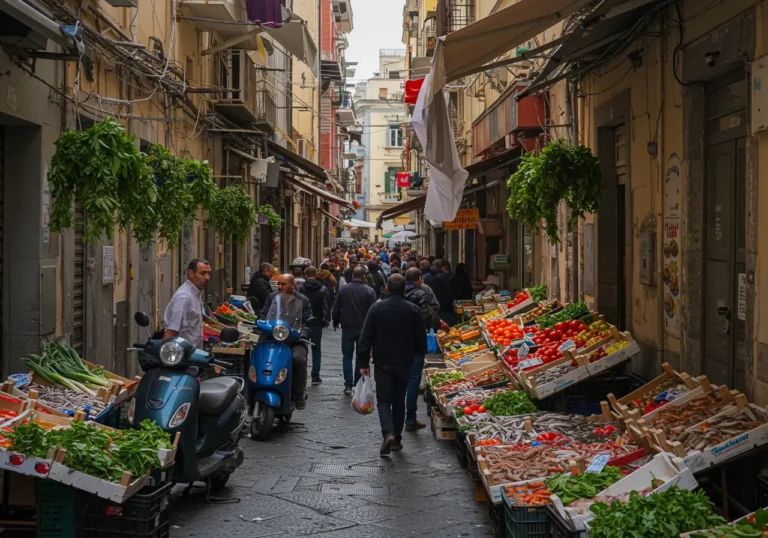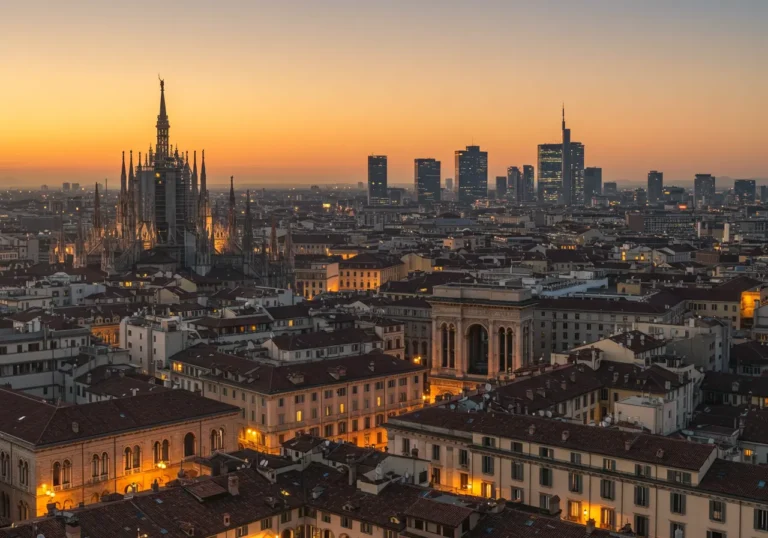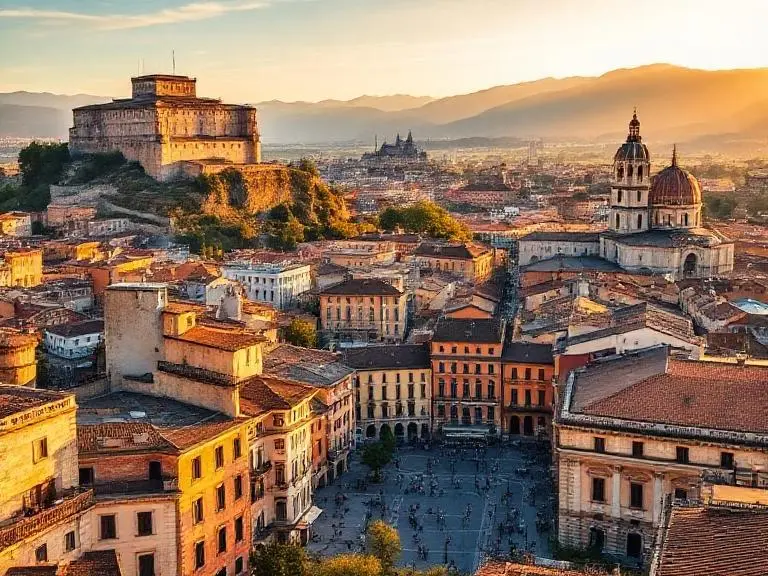10 Beautiful Landmarks You Can’t Miss in Venice
Introduction
Overwhelmed by planning the perfect Venice trip? With countless canals, bridges, and historic sites, this floating city can feel impossible to navigate efficiently. This comprehensive guide reveals Venice’s most beautiful landmarks that every traveler must experience, ensuring you don’t miss the city’s crown jewels.
As a travel strategist who has explored Venice’s winding waterways and hidden corners for years, I’ve curated this essential list based on historical significance, architectural beauty, and visitor experience. This guide covers the top 10 must-see landmarks, practical planning tips, travel essentials, and insider recommendations to help you make the most of your Venetian adventure.
Table of Contents
Why Visit Venice
Venice offers an unparalleled travel experience that combines stunning architecture, rich maritime history, and romantic ambiance unlike anywhere else in the world. Here’s why this floating city should be at the top of your travel list:
- Offers world-class art, history, and cuisine – From Byzantine mosaics in ancient basilicas to traditional Venetian cicchetti, the city provides cultural immersion at every turn
- Easy transport between landmarks via water buses and walking – The compact city center makes it simple to visit multiple attractions in a single day
- Perfect for romantic getaways, family trips, or solo cultural exploration – Venice’s timeless beauty and diverse attractions cater to every type of traveler
10 Beautiful Landmarks You Can’t Miss in Venice
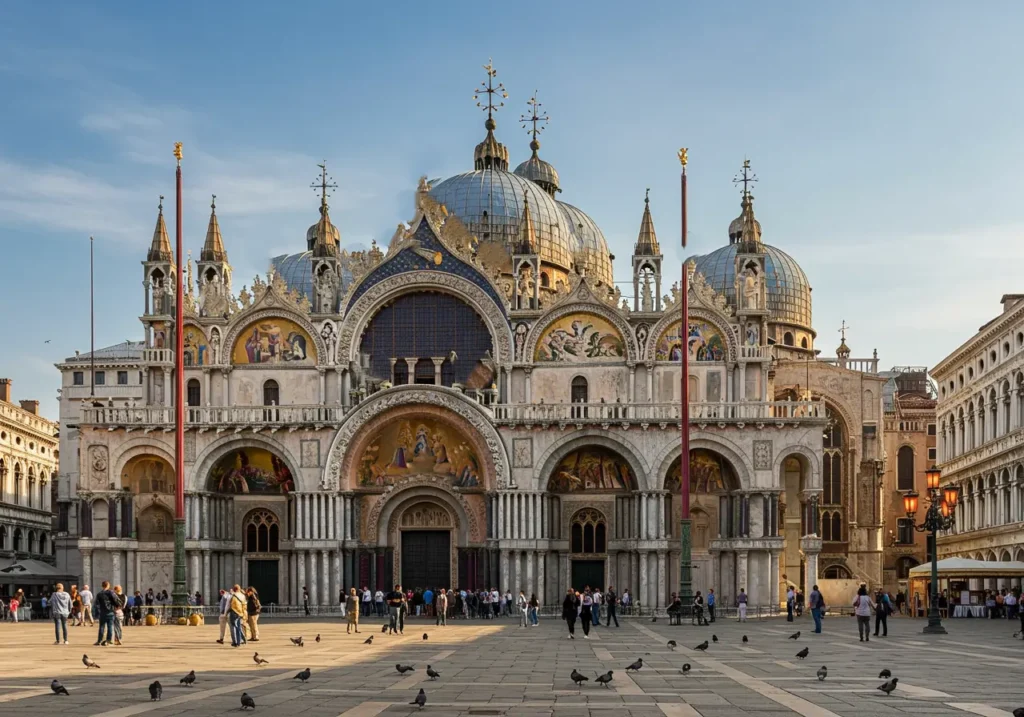
St. Mark’s Basilica (Basilica di San Marco)
This stunning Byzantine masterpiece stands as Venice’s most iconic religious landmark, featuring golden mosaics that have captivated visitors for over 1,000 years. Marvel at the Pala d’Oro, a golden altarpiece adorned with precious gems, and climb to the museum level for breathtaking views of St. Mark’s Square. The intricate marble floors, soaring domes, and shimmering mosaics depicting biblical scenes create an almost otherworldly atmosphere that represents the pinnacle of Venetian artistry and spiritual devotion.
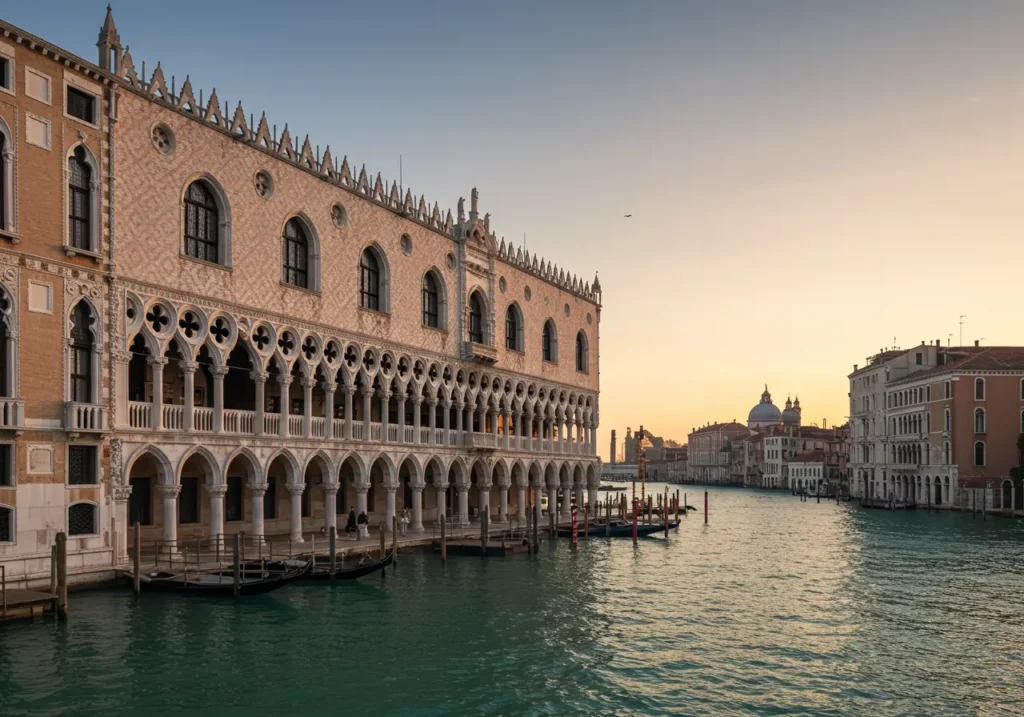
Doge’s Palace (Palazzo Ducale)
Once the residence of Venice’s powerful Doges, this Gothic masterpiece exemplifies the wealth and political influence of the former Venetian Republic. Inside, explore opulent chambers decorated with masterpieces by Tintoretto and Veronese, including the world’s largest oil painting in the Great Council Hall. Don’t miss the famous Bridge of Sighs connection and the atmospheric prison cells where Casanova was once held. The Secret Itineraries tour reveals hidden passages and chambers used for state secrets, offering insights into Venice’s fascinating political intrigue and administrative power during its maritime empire heyday.
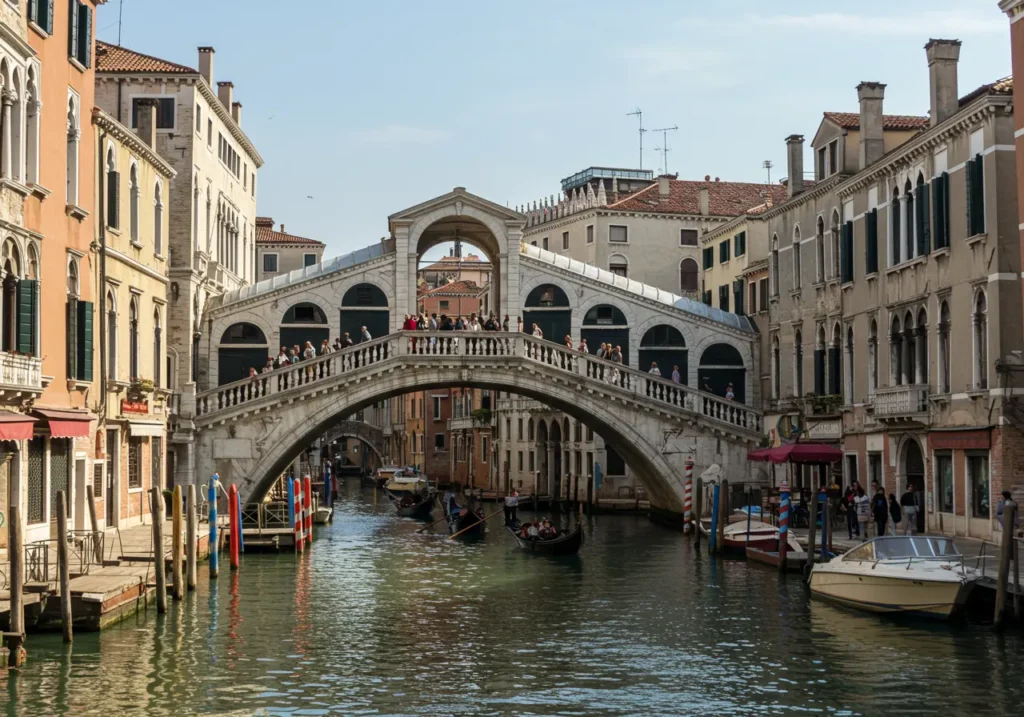
Rialto Bridge (Ponte di Rialto)
The most famous of Venice’s 400 bridges, this architectural marvel spans the Grand Canal at its narrowest point and serves as both a vital transportation link and bustling commercial center. Built in 1591, the single-span stone arch replaced earlier wooden bridges and features elegant arcades housing jewelry shops and souvenir stores. The bridge offers spectacular photo opportunities of Grand Canal gondola traffic and historic palazzos lining the waterway. Visit early morning or late evening to avoid crowds and capture the best lighting. The surrounding Rialto Market area provides authentic Venetian atmosphere with fresh seafood stalls, local produce vendors, and traditional osterias serving cicchetti and regional wines to both locals and discerning travelers.
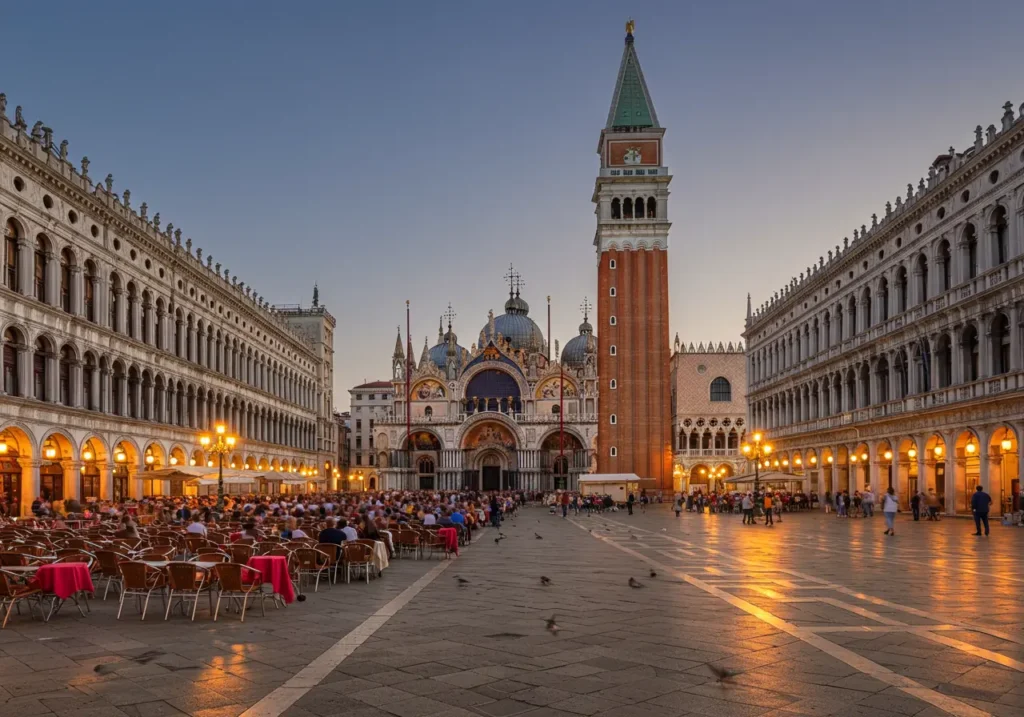
St. Mark’s Square (Piazza San Marco)
Napoleon called it “Europe’s finest drawing room,” and this magnificent piazza remains Venice’s beating heart and social center. Surrounded by stunning architecture including St. Mark’s Basilica, the Doge’s Palace, and elegant Procuratie buildings housing historic cafes, the square creates an incomparable sense of grandeur. The 99-meter tall Campanile offers panoramic city views, while the ornate Clock Tower displays Venice’s famous astronomical timepiece. Historic cafes like Florian and Quadri provide quintessential Venetian experiences with live orchestras and premium coffee service. During acqua alta (high tide) periods, the square transforms into a reflective lake, creating magical photo opportunities. Evening hours bring romantic ambiance as golden lighting illuminates the Byzantine and Gothic architectural details surrounding this iconic gathering place.
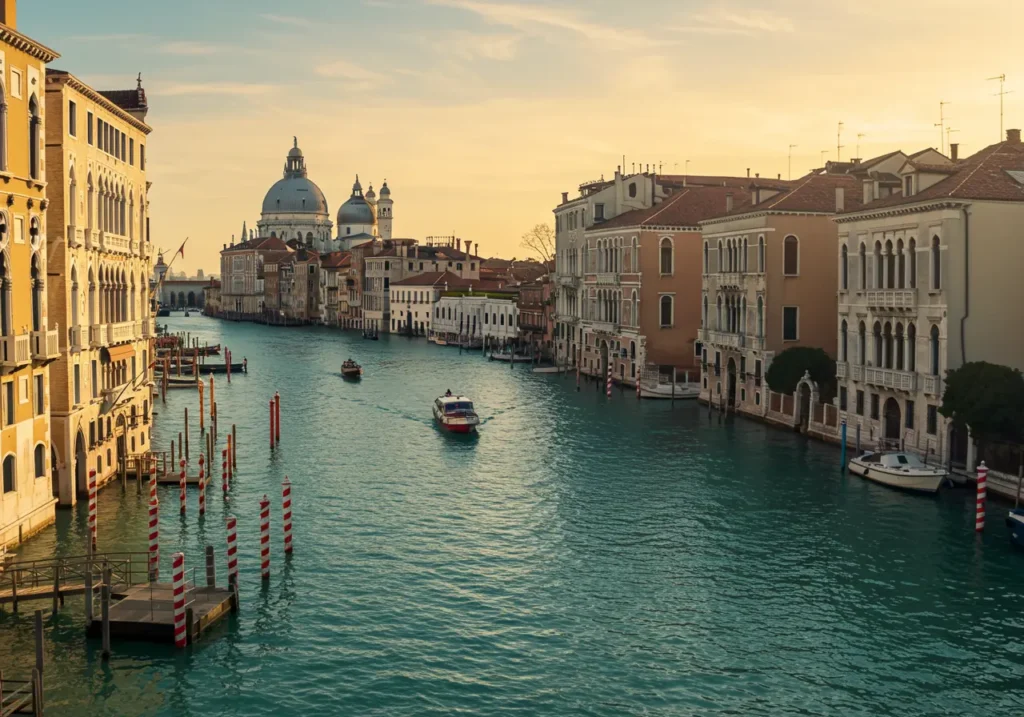
Grand Canal (Canal Grande)
Venice’s Grand Canal is a majestic, S-shaped waterway. Its shores are lined with grand palazzos that reveal a continuous architectural history spanning eight centuries. This ancient waterway serves as the city’s primary highway, bustling with gondolas, water taxis, and vaporettos carrying both residents and visitors. The most scenic way to experience the canal is aboard Vaporetto Line 1, which makes frequent stops and travels slowly enough for photography and sightseeing.
Marvel at architectural gems including Ca’ Rezzonico, Palazzo Grassi, and Ca’ Pesaro, each representing different periods of Venetian prosperity. The canal’s constantly changing light creates different moods throughout the day, from morning mist to golden sunset reflections. Historic regattas and festivals often feature spectacular boat parades along this magnificent waterway, celebrating Venice’s enduring maritime traditions.
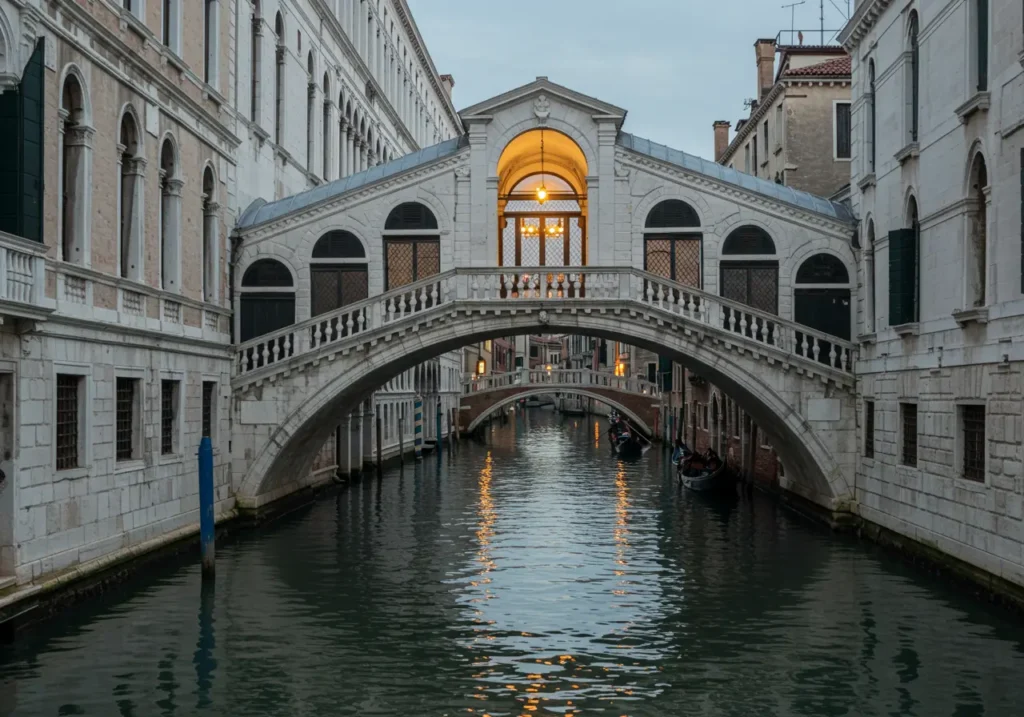
Bridge of Sighs (Ponte dei Sospiri)
This enclosed limestone bridge romantically connects the Doge’s Palace interrogation rooms with the New Prison, creating one of Venice’s most photographed and mythologized landmarks. Built in 1614, the bridge earned its poetic name from Lord Byron, who imagined prisoners sighing at their final view of beautiful Venice through the stone windows. The reality was less romantic – most prisoners were crossing for brief court appearances rather than final departures. The bridge’s elegant Baroque architecture and prime location make it a must-see landmark. Best viewing spots include the nearby Ponte della Paglia and from gondola rides along the Rio di Palazzo, particularly during golden hour when warm light enhances the cream-colored stone facade.
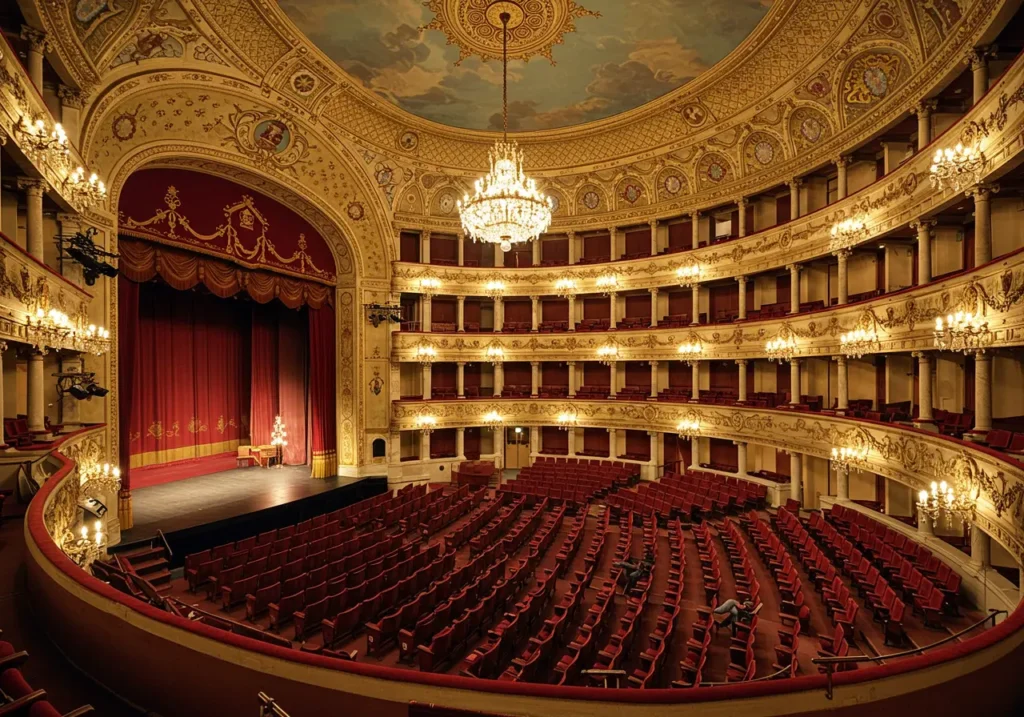
Teatro La Fenice
Rising from ashes like its mythical phoenix namesake, this world-renowned opera house has survived multiple fires and reconstructions while maintaining its position as one of Europe’s most prestigious cultural venues. The current incarnation, rebuilt after a devastating 1996 fire, faithfully recreates the opulent 19th-century interior with gold leaf details, red velvet seating, and crystal chandeliers.
La Fenice premiered works by Verdi, Rossini, and Stravinsky, cementing Venice’s reputation as a major cultural capital. Even without attending performances, guided tours reveal the theater’s fascinating history, backstage areas, and royal boxes. The building’s neoclassical facade on Campo San Fantin provides an elegant contrast to surrounding medieval architecture. Opera season runs from January through July and September through December, offering world-class productions in an intimate, historically significant setting.
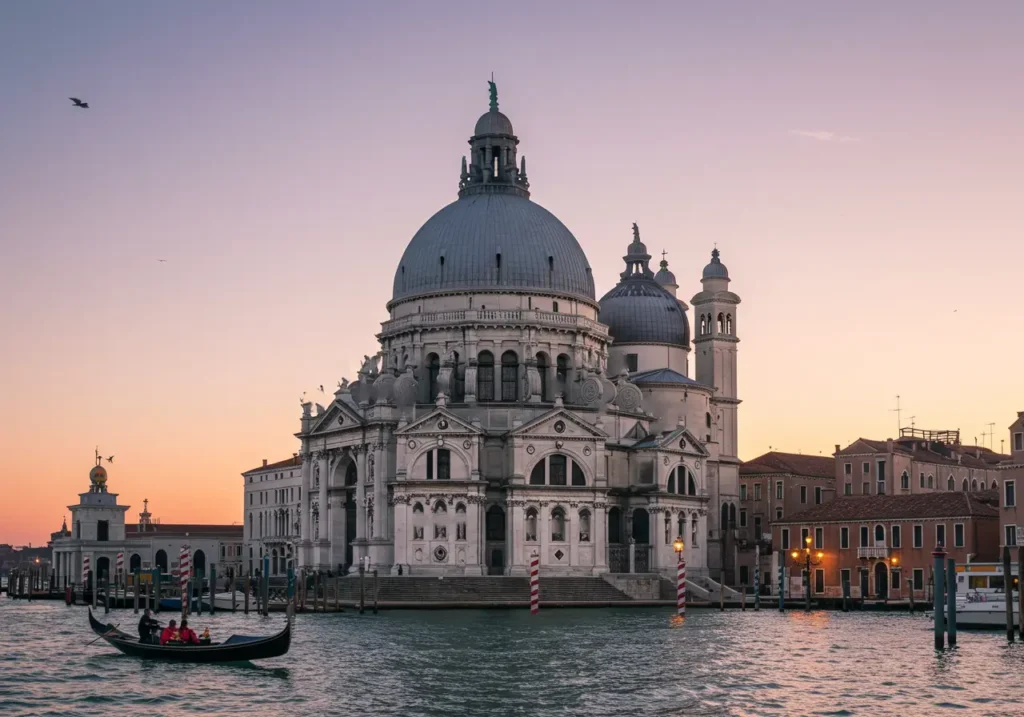
Santa Maria della Salute
This iconic Baroque church dominates the entrance to the Grand Canal with its distinctive octagonal shape and massive central dome flanked by smaller cupolas. Built as a votive offering for the city’s deliverance from a devastating 1630 plague outbreak, the basilica represents both spiritual devotion and architectural innovation. The church houses important artworks by Titian, including his famous ceiling paintings, and Tintoretto’s wedding feast at Cana. The building’s unique design creates dramatic visual effects as light filters through the dome’s windows.
The annual Festa della Madonna della Salute on November 21st sees thousands of Venetians cross a temporary pontoon bridge to attend special services. The church’s steps provide excellent vantage points for Grand Canal photography, particularly during sunset when golden light illuminates the white marble facade against the blue lagoon waters.
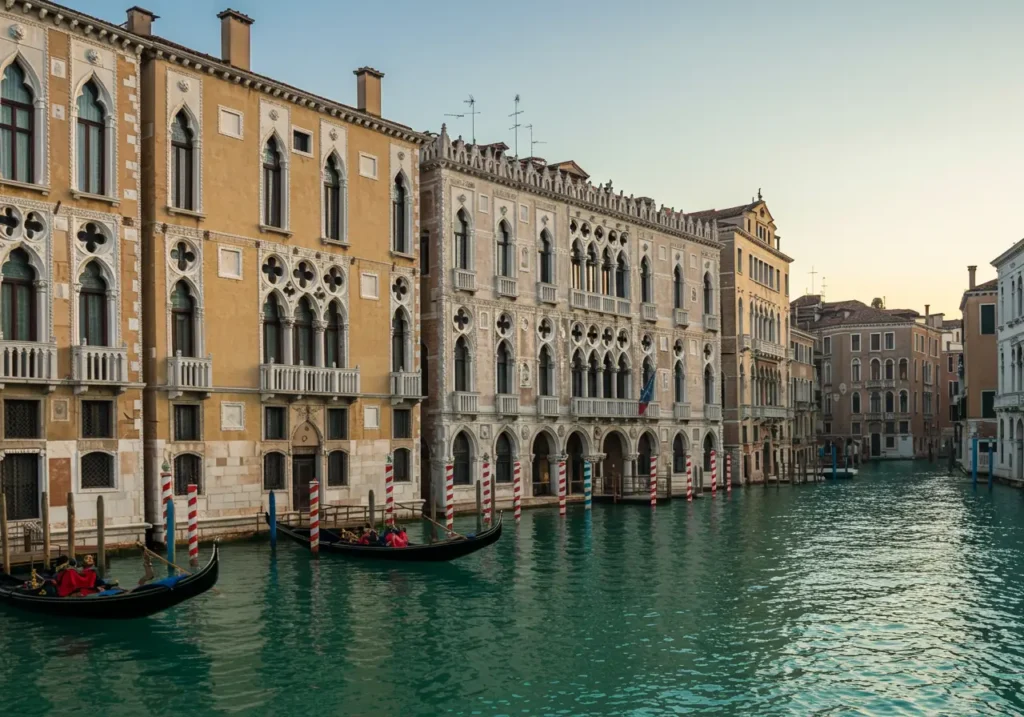
Ca’ d’Oro
Known as the “Golden House,” this 15th-century Gothic palazzo represents the pinnacle of Venetian palatial architecture with its ornate facade featuring delicate stonework, pointed arches, and decorative elements that once gleamed with gold leaf. Now housing the Franchetti Gallery, the palazzo displays an impressive collection of Venetian art, sculptures, and decorative objects spanning several centuries. The building’s asymmetrical facade creates visual movement and elegance that perfectly embodies Venetian Gothic style. Interior highlights include Andrea Mantegna’s St. Sebastian and various works by Venetian masters.
The palazzo’s Grand Canal location provides stunning views from upper floor windows and the charming inner courtyard features a beautiful wellhead and period architectural details. The building represents the wealth and artistic patronage of Venice’s merchant aristocracy during the city’s golden age of maritime trade and cultural influence.
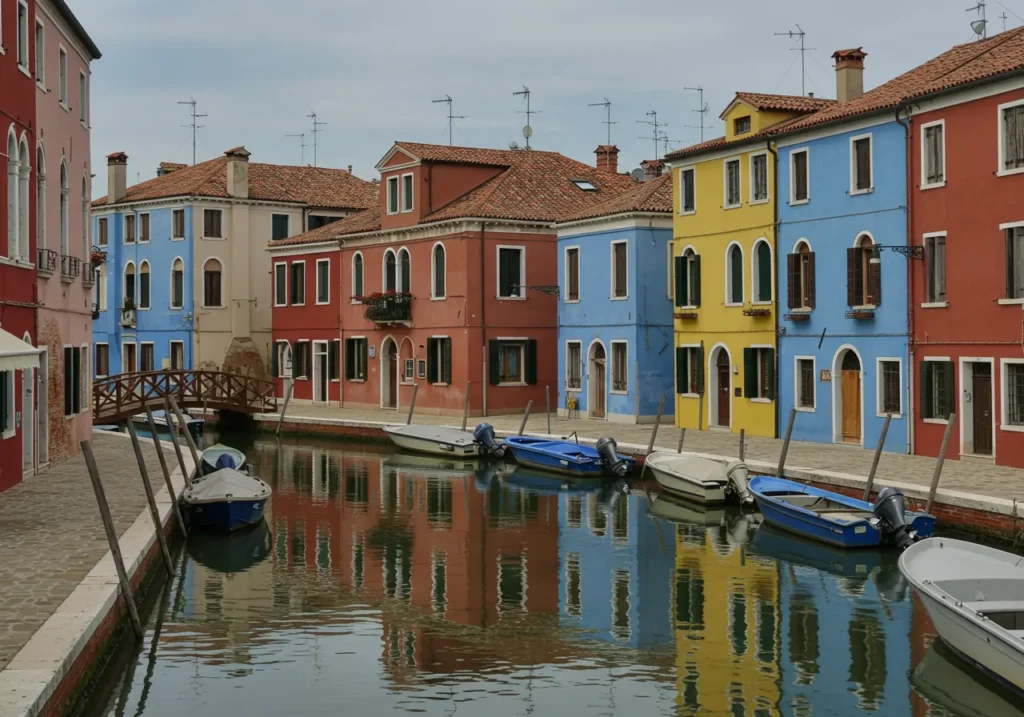
Murano Island
Famous worldwide for its exquisite glass-making traditions dating back to 1291, this charming island offers a peaceful escape from Venice’s crowds while showcasing centuries of artistic craftsmanship. Master glassblowers demonstrate their skills in workshops and showrooms, creating intricate sculptures, delicate ornaments, and functional art pieces using techniques passed down through generations. The Glass Museum (Museo del Vetro) displays historical pieces and explains the evolution of Murano glass techniques. The island’s colorful houses and quiet canals provide a more relaxed atmosphere than central Venice.
Visit working furnaces to witness the mesmerizing process of glass creation, from molten material to finished masterpieces. Many shops offer shipping services for purchases, making it easy to bring home authentic Murano glass souvenirs. The island also features several excellent restaurants serving fresh seafood and traditional Venetian cuisine in a tranquil lagoon setting.
Choosing the Right Destination Areas
Best Areas for First-Time Travelers
Focus your stay around San Marco, Dorsoduro, and Castello districts. These areas provide easy access to major landmarks, excellent dining options, and authentic Venetian atmosphere while remaining well-connected to transportation hubs.
Hidden Gems Beyond Tourist Zones
Explore Cannaregio and Santa Croce for authentic local experiences, traditional bacari (wine bars), and fewer crowds. These neighborhoods offer genuine Venetian life away from the main tourist circuits.
Day Trip Extensions
Consider visiting nearby islands like Murano for glassmaking, Burano for colorful houses and lace-making, or Torcello for ancient history and peaceful landscapes.
Planning & Preparation
Travel Essentials
Pack comfortable walking shoes with good grip for slippery stone bridges and steps. Bring a portable charger, as you’ll use your phone frequently for navigation and photos. Purchase a VeniceCard for public transportation discounts and museum access. Download offline maps since GPS can be unreliable among narrow canals and tall buildings.
Accommodation Tips
Book accommodations well in advance, especially for peak season (April-October). Consider staying in converted palazzos for authentic experiences, or choose modern hotels near major vaporetto stops for convenience. Airbnb options in residential areas offer local neighborhood experiences away from tourist crowds.
Budgeting Basics
Allocate €80-120 daily for mid-range experiences, including meals (€25-40), attractions (€15-25), and transportation (€25). Budget travelers can manage on €50-70 daily, while luxury experiences may require €200+ per day for premium dining and exclusive tours.
Travel Tips
Avoiding Travel Stress
Book major attraction tickets online in advance, especially for St. Mark’s Basilica and Doge’s Palace during peak season. Travel during shoulder seasons (November-March) for fewer crowds and lower prices, though weather can be unpredictable. Pack layers and waterproof shoes for potential acqua alta flooding. Use early morning hours to explore popular landmarks before tour groups arrive.
Tool Recommendations
Download Google Maps offline for Venice, as GPS can be unreliable in narrow alleyways. Use the Actv app for real-time vaporetto schedules and routes. The VeniceConnected website allows advance booking of transportation passes and attraction tickets. Consider the Moovit app for comprehensive public transportation planning throughout the Veneto region.
Safety & Storage
Keep valuables in hotel safes rather than carrying everything while sightseeing. Use train station lockers for luggage storage during day trips or early arrivals. Be aware of pickpockets in crowded areas like St. Mark’s Square and on busy vaporettos. Emergency numbers: 112 (general emergency), 041-274-8082 (tourist police).
Experience Variations
Luxury Travel
Indulge in Michelin-starred dining at Quadri or Alle Testiere for exceptional Venetian cuisine with premium ingredients and innovative presentations. Stay at historic palazzos converted into luxury hotels like Aman Venice or Palazzo Stern. Book private gondola serenades, exclusive after-hours museum tours, and helicopter transfers for ultimate convenience and exclusivity.
Budget-Friendly
Explore bacaro crawls for authentic cicchetti (small plates) and local wines at fraction of restaurant costs. Stay in Venice hostels or mainland Mestre accommodations with easy train connections. Join free walking tours, visit free churches and campos, and pack picnic lunches to enjoy in scenic squares and along canal banks.
Adventure Travel
Take photography workshops focusing on Venice’s unique light and architecture. Join kayaking tours through hidden canals and lagoon islands for unique perspectives. Explore lesser-known neighborhoods like Castello and Santa Croce on foot, discovering artisan workshops, local markets, and authentic neighborhood life away from tourist circuits.
Suggested Itineraries
Classic Venice in 3 Days
Day 1: St. Mark’s Square area – Basilica, Doge’s Palace, Bridge of Sighs, and Campanile. Day 2: Grand Canal exploration via vaporetto, Rialto Bridge and Market, and Dorsoduro district including Santa Maria della Salute. Day 3: Murano and Burano island hopping for glass-making and colorful architecture experiences.
Venice and Veneto Region in 7 Days
Combine Venice (4 days) with Verona for Romeo and Juliet sites and Roman amphitheater, Padua for Giotto’s Scrovegni Chapel, and Vicenza for Palladian architecture. This itinerary provides cultural diversity while maintaining a convenient base in the Veneto region.
Art and Architecture Focus
Dedicate time to Ca’ Rezzonico, Peggy Guggenheim Collection, and Palazzo Grassi for comprehensive art experiences. Include Teatro La Fenice tours and performances, plus San Giorgio Maggiore for Palladio architecture and panoramic city views from the campanile.
FAQs
Is Venice safe for solo travelers?
Yes, Venice is very safe with low crime rates. Main concerns are pickpocketing in crowded areas and navigating bridges with heavy luggage. Solo female travelers report feeling secure walking at night through well-lit areas.
What’s the best time to visit Venice?
April-June and September-October offer ideal weather and manageable crowds. July-August brings peak temperatures and crowds. November-March features fewer tourists and potential acqua alta flooding, plus carnival season in February.
Do I need to speak Italian to get by?
English is widely spoken in tourist areas, hotels, and restaurants. Learning basic Italian phrases enhances interactions with locals. Download translation apps for backup communication assistance when exploring residential neighborhoods.
How much should I budget for Venice?
Mid-range travelers need €80-120 daily including accommodations, meals, and attractions. Budget options start around €50-70, while luxury experiences require €200+ daily. Restaurant meals range from €15-50+ depending on location and style.
Conclusion
Venice’s beautiful landmarks offer an unparalleled journey through centuries of art, architecture, and maritime history. From the golden mosaics of St. Mark’s Basilica to the romantic canals surrounding these magnificent structures, each landmark tells part of Venice’s extraordinary story.
Pack your bags and start exploring Venice’s treasures today! These timeless landmarks await your discovery, promising memories that will last a lifetime. Join thousands of travelers who have fallen in love with Venice’s magic – your own Venetian adventure begins with that first step onto a vaporetto at the train station, ready to experience the floating city’s incomparable beauty.

